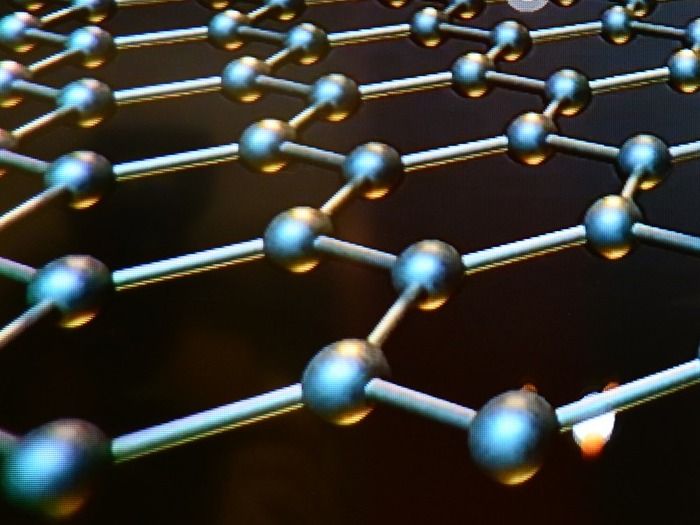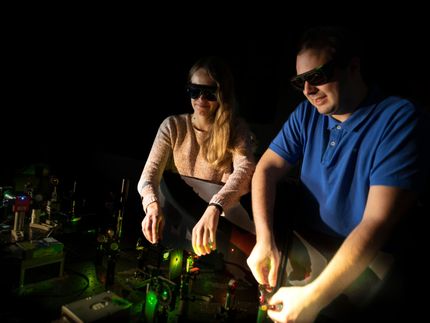Atomic-scale tailoring of graphene approaches macroscopic world
"We are excited of the prospect of creating new materials that are designed starting at the atomic level, based on this method"
Properties of materials are often defined by imperfections in their atomic structure, especially when the material itself is just one atom thick, such as graphene. Researchers at the University of Vienna have now developed a method for controlled creation of such imperfections into graphene at length scales approaching the macroscopic world. These results, confirmed by atomically resolved microscope images and published in the journal Nano Letters, serve as an essential starting point both for tailoring graphene for applications and for the development of new materials.

Symbolic image
pixabay.com
Graphene consists of carbon atoms arranged in a chicken-wire like pattern. This one-atom-thick material is famous for its many extraordinary properties, such as extreme strength and remarkable capability to conduct electricity. Since its discovery, researchers have looked for ways to further tailor graphene through controlled manipulation of its atomic structure. However, until now, such modifications have been only confirmed locally, because of challenges in atomic-resolution imaging of large samples and analysis of large datasets.
Now a team around Jani Kotakoski at the University of Vienna together with Nion Co. has combined an experimental setup built around an atomic-resolution Nion UltraSTEM 100 microscope and new approaches to imaging and data analysis through machine learning to bring atomic-scale control of graphene towards macroscopic sample sizes.
The experiment begins by cleaning graphene via laser irradiation, after which it is controllably modified using low energy argon ion irradiation. After transferring the sample to the microscope under vacuum, it is imaged at atomic resolution with an automatic algorithm. The recorded images are passed to a neural network which recognizes the atomic structure providing a comprehensive overview of the atomic-scale alteration of the sample.
"The key to the successful experiment was the combination of our unique experimental setup with the new automated imaging and machine learning algorithms", says Alberto Trentino, the lead author of the study. "Developing all necessary pieces was a real team effort, and now they can be easily used for follow-up experiments", he continues. Indeed, after this confirmed atomic-scale modification of graphene over a large area, the researchers are already expanding the method to employ the created structural imperfections to anchor impurity atoms to the structure. "We are excited of the prospect of creating new materials that are designed starting at the atomic level, based on this method", Jani Kotakoski, the leader of the research team concludes.
Original publication
Other news from the department science

Get the chemical industry in your inbox
By submitting this form you agree that LUMITOS AG will send you the newsletter(s) selected above by email. Your data will not be passed on to third parties. Your data will be stored and processed in accordance with our data protection regulations. LUMITOS may contact you by email for the purpose of advertising or market and opinion surveys. You can revoke your consent at any time without giving reasons to LUMITOS AG, Ernst-Augustin-Str. 2, 12489 Berlin, Germany or by e-mail at revoke@lumitos.com with effect for the future. In addition, each email contains a link to unsubscribe from the corresponding newsletter.

























































